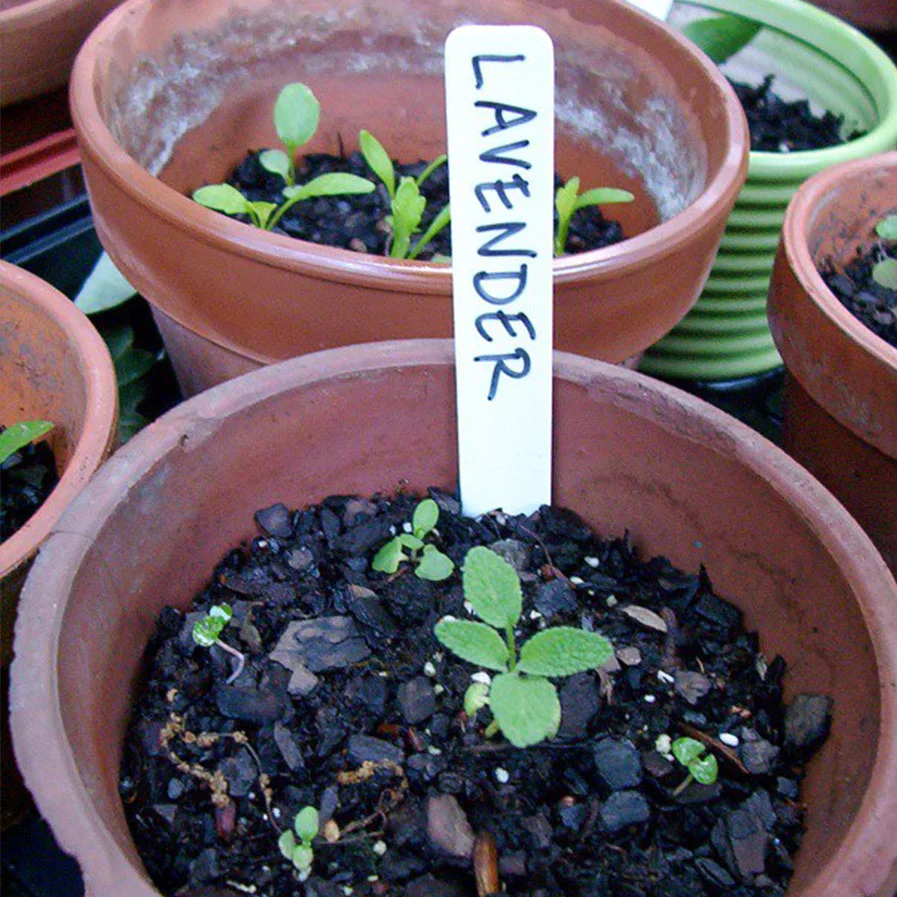
Lavender Seedling
Quick links to save you time
Why grow Lavender?
Lavender is a very popular and versatile plant with numerous benefits. These are some reasons why I think you should grow Lavender:
- Easy to grow: Lavender is easy to grow in most climates, requiring little water, full sun, and well-drained soil.
- Low maintenance: Lavender is a hardy plant that requires minimal care once established.
- Drought-resistant: Lavender is a drought-resistant plant, making it an excellent choice for water-wise gardening.
- Long lifespan: With proper care, Lavender plants can live for several years, providing beauty and fragrance to your garden.
- Versatile: Lavender can be grown in various climates and can be used in different ways, such as in gardens, as hedges, or in containers.
- Beautiful: Lavender is an attractive plant with lovely flowers and foliage, making it a great addition to any garden or outdoor space.
- Medicinal properties: Lavender has calming and relaxing properties, making it an excellent choice for reducing anxiety and promoting relaxation.
- Aromatic: Lavender is known for its pleasant scent, which can be used in various applications, such as potpourri, essential oils, and perfumes.
- Culinary uses: Lavender can be used in cooking and baking, adding a unique flavor to dishes and beverages.
- Pollinator-friendly: Lavender attracts bees and butterflies, making it beneficial for pollinators.
- Companion planting: Lavender can be used as a companion plant, helping to repel pests and attract suitable pollinator insects.
Choosing the right Lavender variety

Lavender Allegory
Credit Alberto Conde, Kitchen In The Med
There are more than 450 varieties of lavender, but the most famous fall under three types: Spanish, English, and French.
If your favorite Lavender type is not one of these, it might be a cultivar (a Lavender variety produced by selective breeding) of one of the three.
Please check my article here for a more extensive list of Lavender varieties.
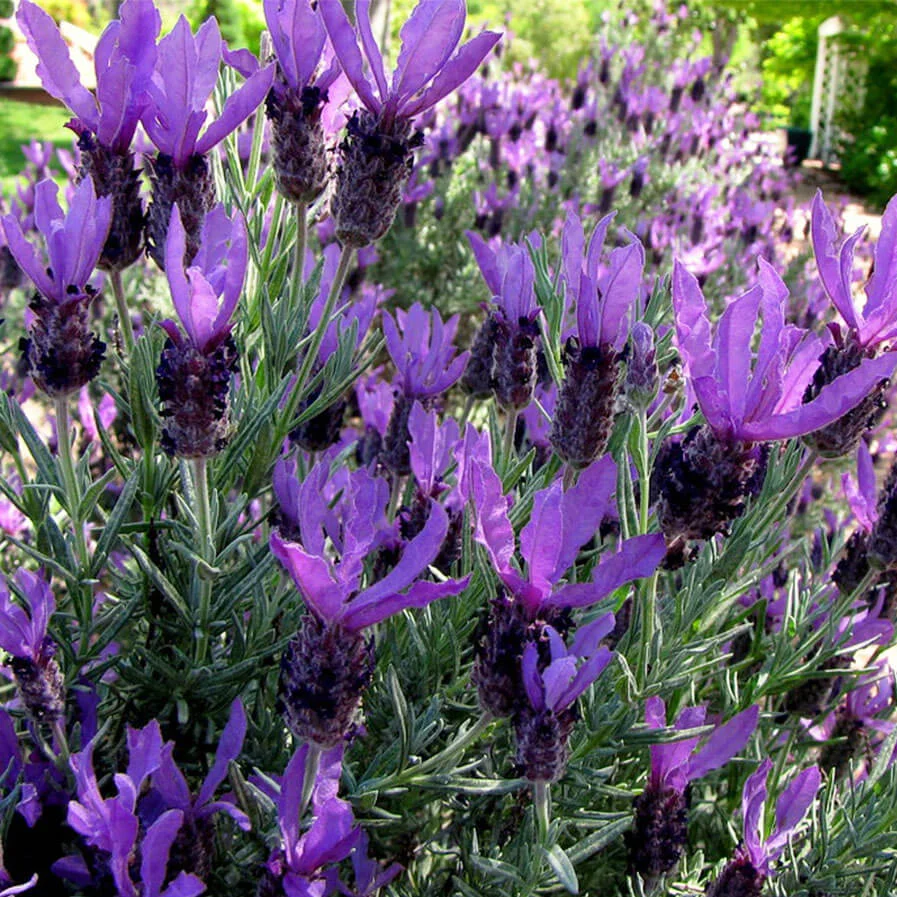
Spanish Lavender
Spanish Lavender:
Originating from the Mediterranean areas, including Spain, Portugal, and North Africa, Spanish Lavender (Lavandula stoechas) has been treasured for its aesthetic and therapeutic attributes for centuries. Recognizable by its slender leaves and lavender to pink-violet blooms, this plant exhibits a unique “pineapple”-like flower crown. It typically grows as a fragrant shrub reaching heights of 3 feet and spans up to 2 feet (up to roughly a meter)
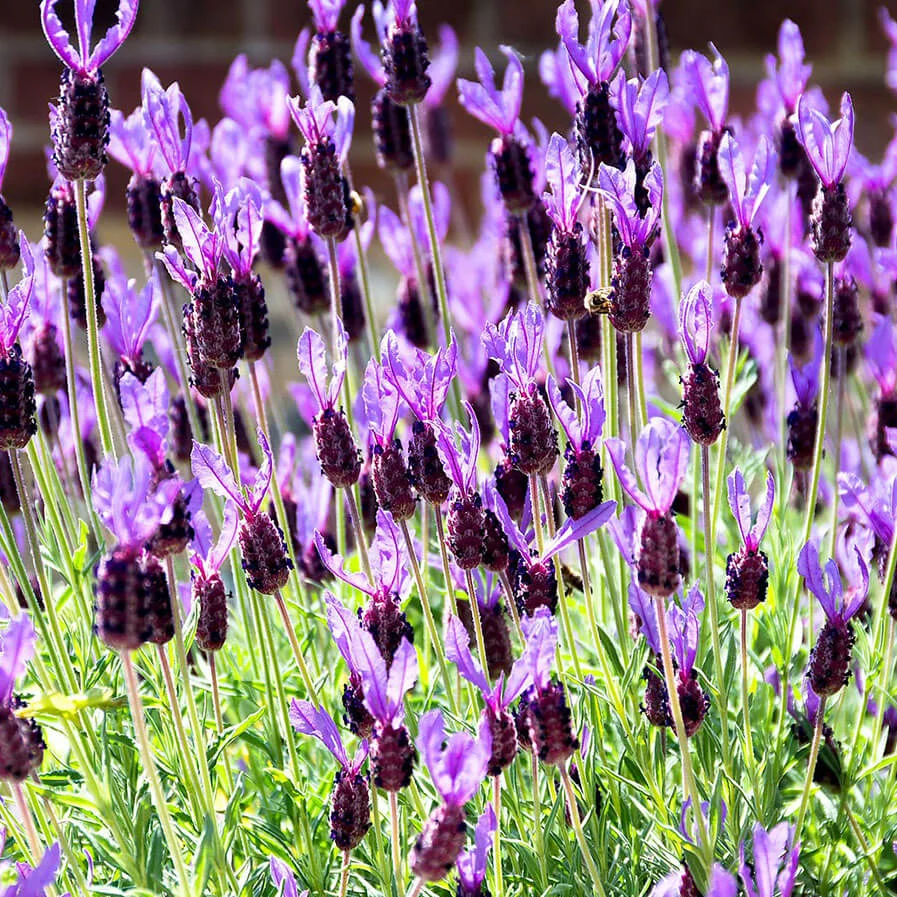
French Lavender
French Lavender:
Also native to the Mediterranean, particularly France, Italy, and Greece, French Lavender (Lavandula dentata) has a long history of ornamental and medicinal use. This variety has toothed leaves, and Lavender-blue flowers arranged in whorls along its stem. It similarly grows to about 3 feet in height and 2 feet in width (up to roughly a meter)
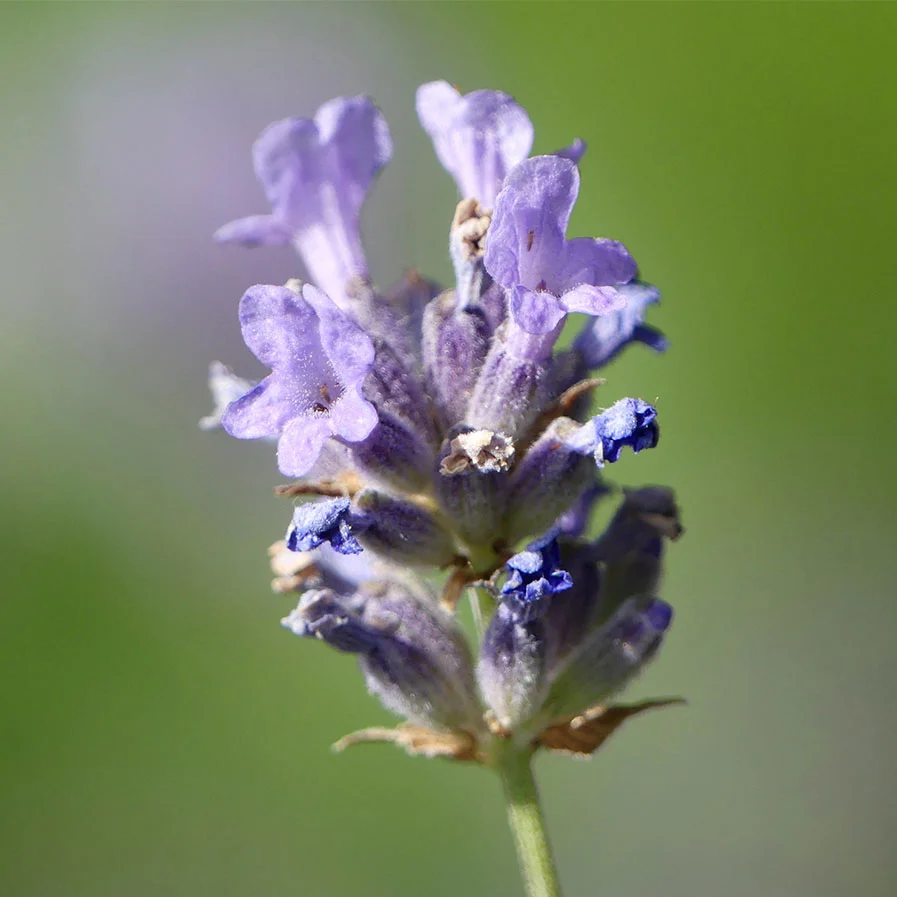
English Lavender
Credit Simon (celery) Marshall
English Lavender:
Though dubbed “English,” Lavandula angustifolia traces its origins to Western Mediterranean regions, including Spain, France, and Italy. People grew it for centuries for ornamental, culinary, and medicinal purposes. It bears narrow leaves and Lavender-blue flowers whorled along its stems. It matches its counterparts in size, reaching 3 feet in height and 2 feet across (up to roughly a meter)
Help to choose the right variety for you
Spanish vs. French Lavender:
The primary distinction between Spanish and French Lavender lies in their leaves. While Spanish Lavender has straight leaves, French Lavender features leaves with serrated edges. In the UK, Lavandula stoechas is called “French Lavender,” but it retains its “Spanish Lavender” label elsewhere.
Spanish vs. English Lavender:
Although Spanish and English Lavenders may appear similar, their terminology could be more precise. Spanish Lavender (Lavandula stoechas) is known as “French Lavender” in the UK. Yet, outside the UK, it’s termed Spanish lavender. Interestingly, even though it’s named “English” Lavender, Lavandula angustifolia is not truly native to the UK.
French vs. English Lavender:
French Lavender (Lavandula dentata) is an evergreen shrub originating from Eastern and Southern Spain, named for its distinctive toothed (dentate) leaves and aromatic essence. Contrarily, English Lavender (Lavandula angustifolia) stands out with its slender leaves and tall flower spikes, tracing its roots to various Mediterranean regions, including France, Italy, and Greece.
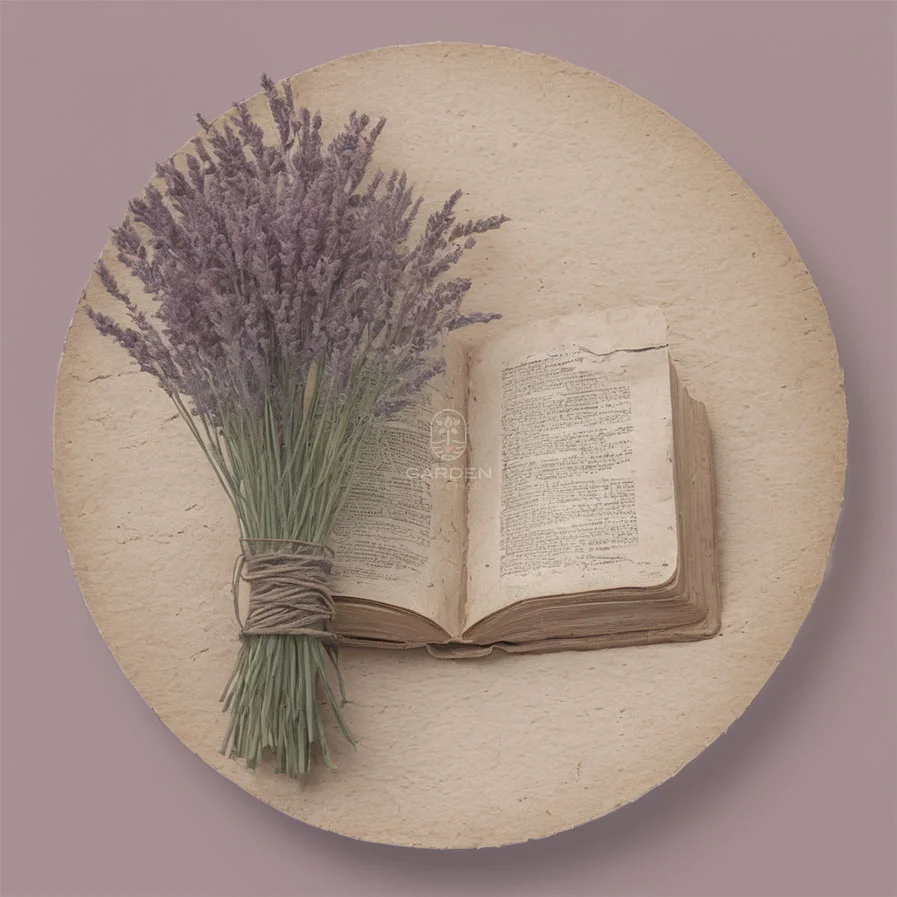
Lavender Allegory
Credit Alberto Conde, Kitchen In The Med
Here are some reasons to grow English, French, and Spanish Lavender, along with their pros, cons, and examples.
Pros and cons of English Lavender
English Lavender can grow in cooler climates.
- Pros: It is hardy and more tolerant of cold weather than other species of lavender. It comes in many varieties, making finding one that suits your needs easy. It has a sweet fragrance.
- Cons: Can be susceptible to root rot in regions with high humidity. It does not tolerate wet or water-logged soils.
Pros and cons of French Lavender
French lavender is a beautiful and fragrant plant that is easy to grow and maintain.
- Pros: Hardy and evergreen in USDA zones 8 to 11. People usually value it for its decorative value in gardens and sometimes for its attractive cut blossoms. It has many varieties, including pink, purple, and white flowers.
- Cons: It is less fragrant than other species of lavender. French lavender does not tolerate cold weather and is not cold hardy. French lavender has a shorter bloom time than other species of lavender.
Pros and cons of Spanish Lavender
Spanish lavender is an excellent choice for gardeners in hot, dry climates who want a unique, beautiful, edible plant.
- Pros: It is more heat tolerant than other species of lavender. The Leaves are edible and can be used to flavor savory dishes or baked goods. It thrives in both arid, warm terrains and temperate cottage gardens.
- Cons: It is more sensitive to cold than other Lavender varieties. It requires well-drained soil with a sandy or gravelly texture and a pH of 6.0-8.0. Bloom time is shorter than that of other lavender species.
How to Grow Lavender
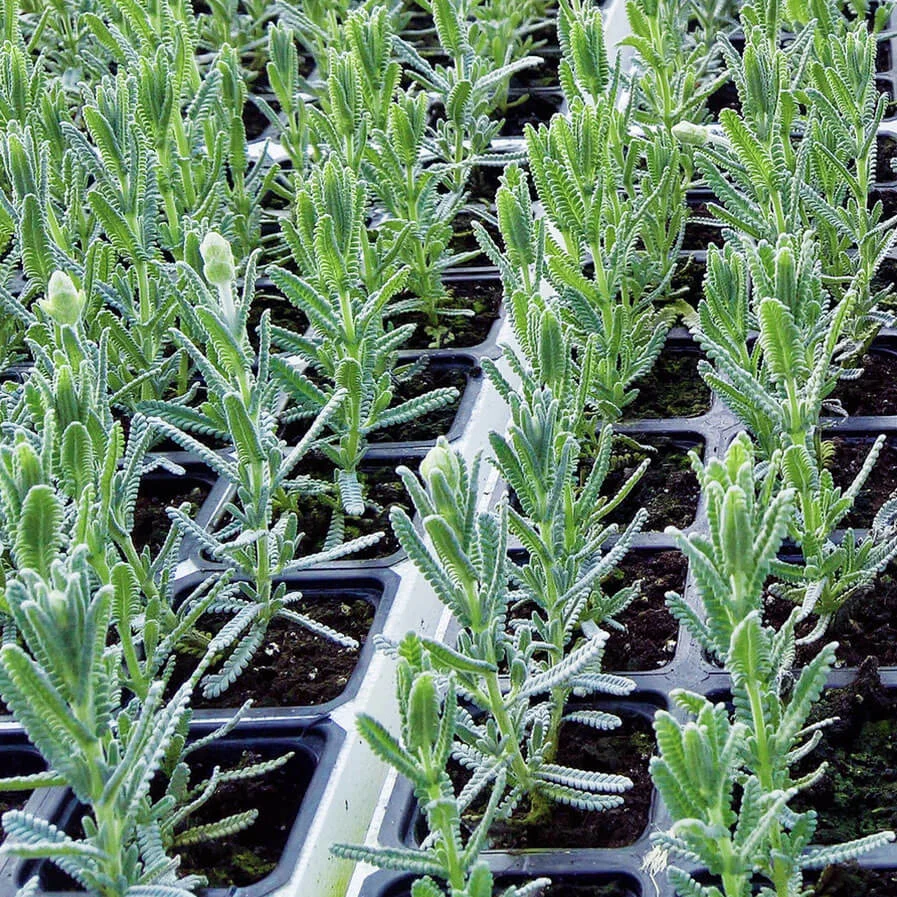
Lavender Seedlings
- Choose the suitable variety: Pick the one that best suits you and your environment.
- Plant in well-drained soil: Lavender likes barely alkaline soil with a pH of around 7.
- Provide full sun: Lavender plants need at least six hours of direct sunlight to grow and flower successfully.
- Water appropriately: Lavender requires less frequent watering than other plants, especially once established. Overwatering can lead to root rot.
- Prune regularly: Harvest Lavender as it blooms throughout the summer, and prune back by about a third each fall.
Lavender Plant Care: Sun, Watering, and Sunlight Requirements
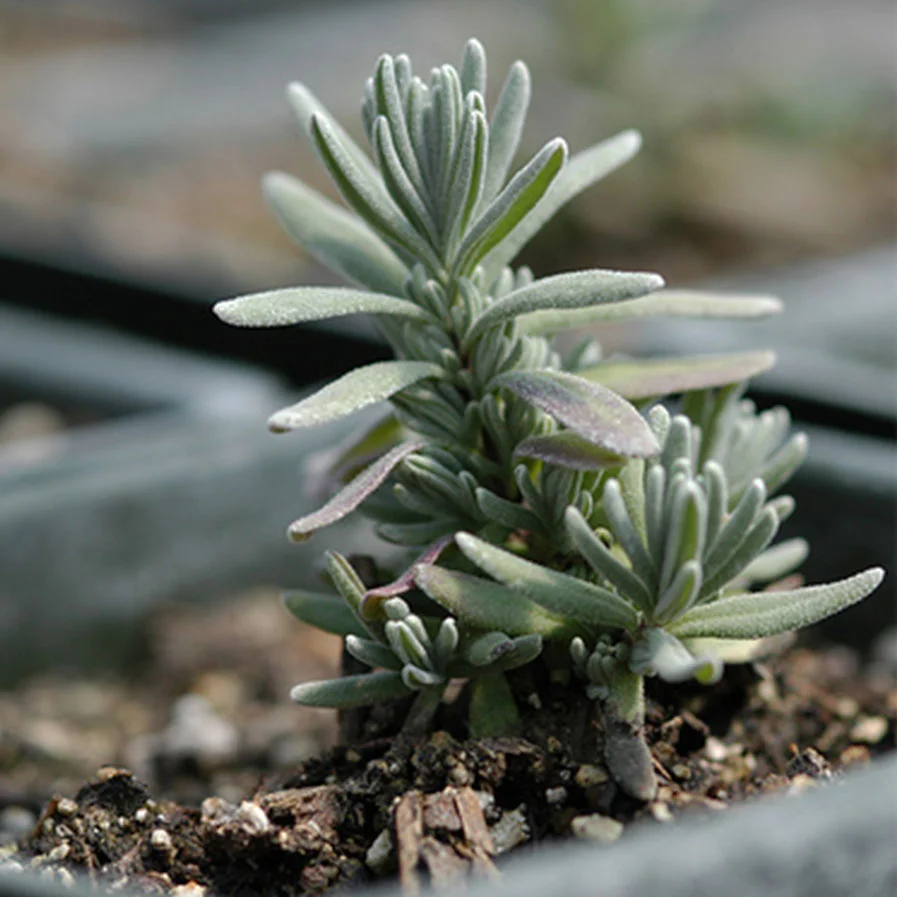
Lavender Seedling
To recap, Lavender plants require:
- Full sun: At least six hours of direct sunlight per day.
- Well-drained soil: Lavender prefers slightly alkaline soil with good drainage.
- Moderate watering: Water less frequently than other plants, especially once established. Overwatering can lead to root rot.
Best Soil Mix for Lavender
The best soil mix for lavender in pots includes
- 1 part potting soil
- One part of horticultural sand, pumice, or perlite.
This mix ensures good drainage and aeration, which is essential for healthy lavender growth and rot prevention.
Fertilizing Lavender
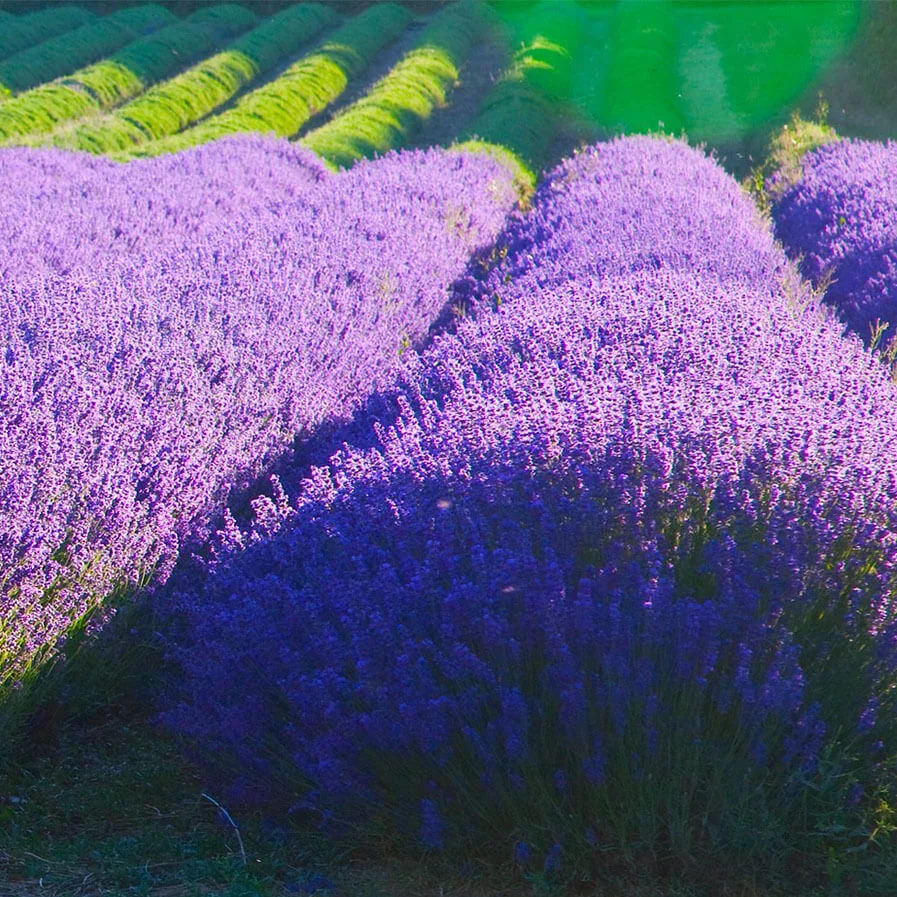
English Lavender
- Generally, lavender does not need fertilization as it is accustomed to nutrient-poor soils. Regular fertilizing is, therefore, by no means necessary, and over-fertilizing can weaken the plant and make it prone to disease.
- However, growing lavender commercially in today’s competitive landscape requires specific steps towards monitoring, improving, and enriching soil nutrients to give high yields for over 15 years. In the fall, you can apply fertilizers that contain phosphorus and potassium if you plan on commercial and large plantations.
- According to old farmers, lavender is one of the few crops without fertilizer. Nevertheless, these are typical trends, so you should investigate them first. Every field is different and has different needs.
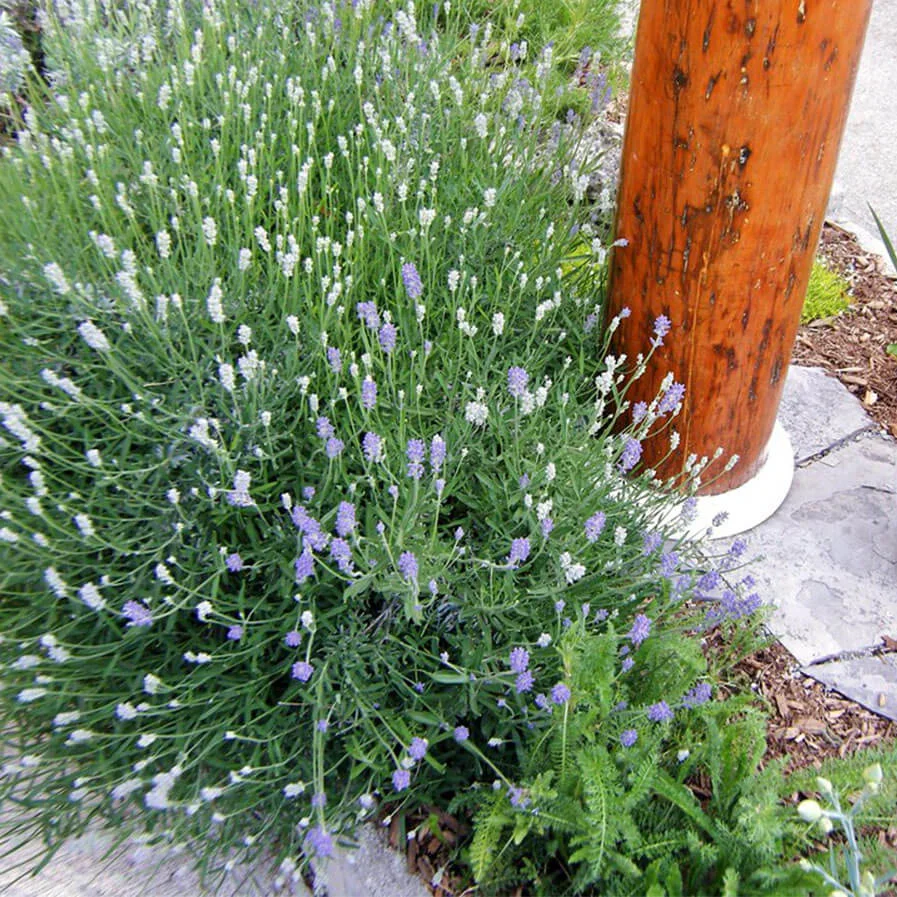
Lavender
The lifespan of lavender
Lavender is a perennial plant, meaning it can live for several years. Lavender plants can thrive and produce flowers for many years with proper care.
Lavender Blooming Month
Lavender typically blooms in the summer, with peak bloom from July to August. However, the exact blooming time depends on the species and growing conditions.
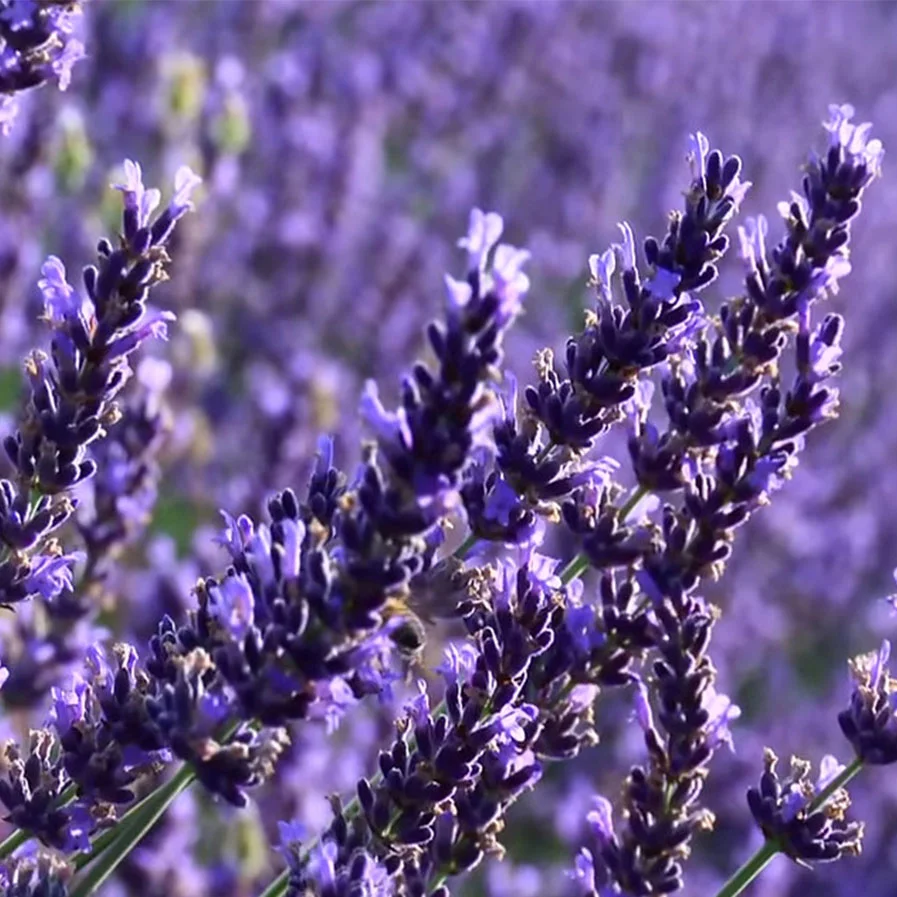
Lavender
Pruning Lavender: A Comprehensive Guide
Pruning lavender is essential in maintaining the plant’s health, appearance, and longevity. Proper pruning encourages bushier growth and more flowers and prevents woody and leggy stems with sparse growth. Here is a comprehensive guide on pruning lavender, including answers to common questions:
Is Pruning Lavender Necessary?
Pruning is essential for woody subshrubs like lavender. It helps maintain the plant’s shape, promotes new growth, and prevents it from becoming overgrown and leggy. Regular pruning can extend Lavender plants’ lifespan and keep them attractive and healthy.
When to Prune Lavender
The best time to prune lavender depends on the variety and your climate. In general, it is better to prune lavender after it has finished flowering.

Pruning Lavender
How do I know if my Lavender plant needs pruning?
To tell if your Lavender plant needs pruning, look for overgrowth signs, such as woody and leggy stems with sparse growth and a lack of flowers. Frequent trimming is crucial to maintain your lavender’s appearance, health, and longevity. Certain Lavender varieties can endure for 20 years when pruned correctly. The best time to prune lavender depends on the type and your climate. In general, it is better to prune lavender after it has finished flowering. For example, pruning hardy lavender after they have finished flowering in late August or September yields better results. Prune Spanish Lavender immediately after the first wave of blooms in spring and then again in mid-summer. Pruning English Lavender is advised after the flowers have faded, usually in late August or September. French lavender is better pruned in early spring. If your Lavender plant is overgrown and leggy, do a hard prune immediately after flowering.
How to Prune Lavender
When pruning lavender, it is essential to use clean, sharp garden shears. Here are some general steps:
- Gather a handful of flower stems together.
- Clip beneath the stems, removing a couple of inches of the leaves.
- Cut back the stems into bare wood, especially for a hard prune to rejuvenate overgrown and leggy lavender.
Here are some guidelines for pruning different Lavender varieties:
- English Lavender (Lavandula angustifolia and L. x intermedia): Prune English Lavender after the flowers have faded, usually in late August or September. Trim approximately two-thirds of the plant’s height or down to just above the lowest two leaf pairs on each branch.
- Spanish Lavender (Lavandula stoechas): Prune Spanish Lavender in the summer by trimming dead or damaged leaves and stems. Trim the plant by approximately one-third its overall size and shape it into a nice, even mound. In the fall, remove any dead, diseased, or damaged growth and cut back the plants by one-third to one-half their height.
- French Lavender (Lavandula dentata): Prune French Lavender in early spring. Cut back half to two-thirds of the shoot length with sharp hedge shears. Avoid cutting back in autumn, as it reduces winter hardiness.
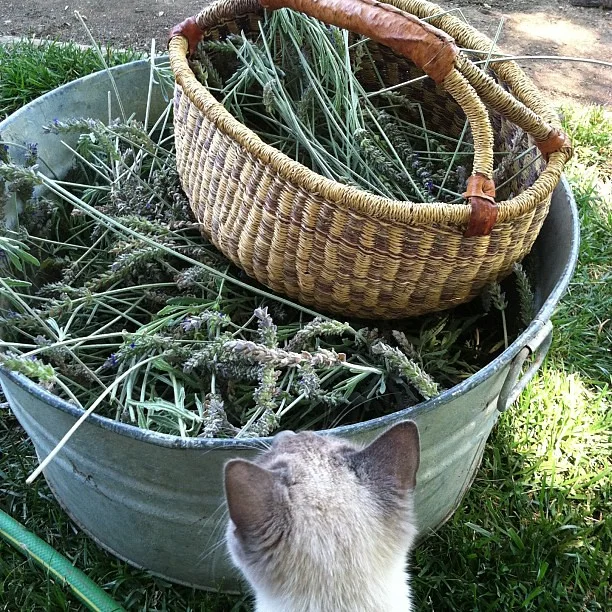
Pruning Lavender
Deadheading Lavender
Deadheading lavender is only sometimes necessary, but it offers benefits such as promoting a second flush of flowers and keeping the plant neat and compact. Deadhead Lavender by removing the first flush of flowers after they start to fade. This deadheading can encourage the shrub to flower again before the end of the season. Spanish lavender can usually get a second bloom.
What to Do with Lavender After It Blooms

Lavender Blooms
After Lavender blooms, you can harvest the flowers for various purposes, such as making sachets and potpourri or using them in recipes. Prune the plant to keep its form and promote new growth. If you have deadheaded the lavender, you can use the aromatic stems for various purposes, even when they appear past their best.
Remember always to consider the specific variety of lavender you have and the climate in which you are growing it when determining the best time and method for pruning.
How to Harvest Lavender
- Choose the right time: Harvest Lavender on a bright day after the morning dew has dried.
- Use the appropriate tool: Cut the stems with a curved, serrated blade, garden pruners, or large scissors.
- Cut at the right location: Cut the stem above the leaves or side branches.
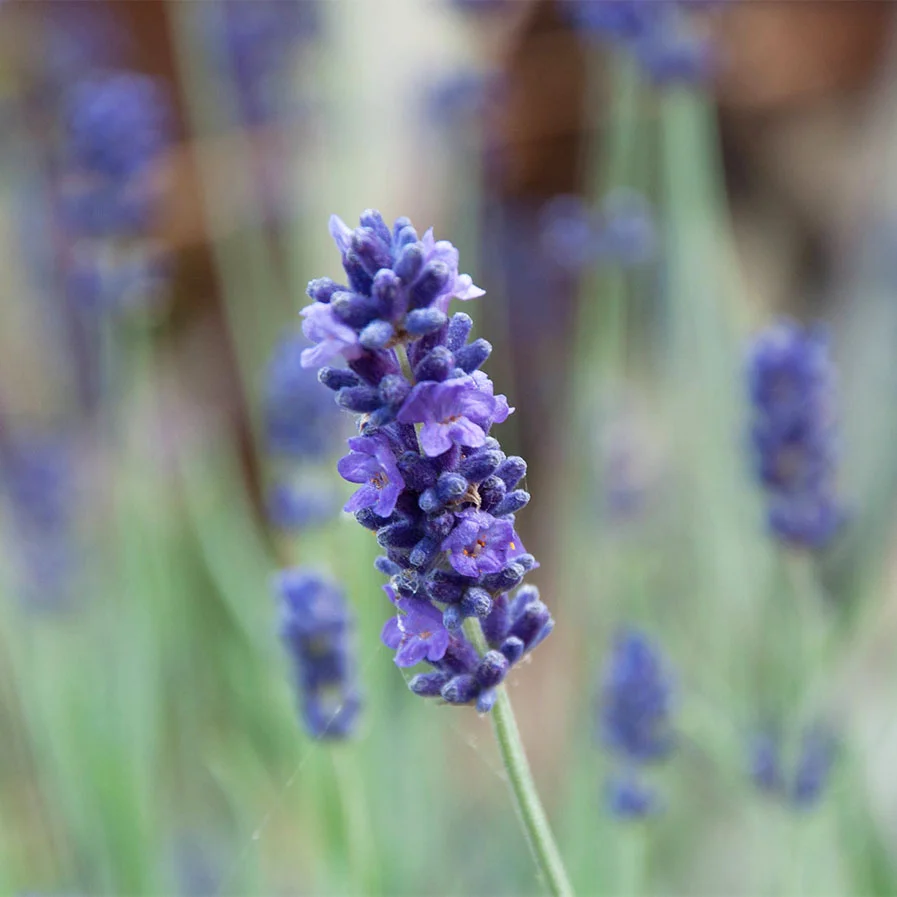
English Lavender
Propagation of Lavender:
- Seeds: Seeds aren’t the primary propagation method for commercial crops, but breeders might use them in specific scenarios. Additionally, this technique helps spread wild Lavender types originating from spontaneous growth in France. These wild plants can yield essential oil that aligns with established standards.
- Cuttings: You can also propagate lavender using cuttings.

Propagating Lavender
Lavender Cuttings
Can you break the lavender plant off and replant it?
Yes, you can break off a stem of lavender and replant it. This method is called propagating lavender from cuttings.
Can lavender grow from cuttings?
Yes, lavender can grow from cuttings. Propagating lavender from cuttings is easy and more likely to be successful than growing plants from seeds. You can grow lavender from hardwood or softwood cuttings. Softwood cuttings come from the soft, young tips of new growth. Hardwood is stouter than softwood and withstands bending. It may snap if you force it to bend.
Can you plant Lavender cuttings directly on the soil?
Yes, you can plant Lavender cuttings directly in the soil. Before planting, dip the bottom portion of the stem in root hormone and insert it into the soil.
Can I leave Lavender cuttings outside?
Yes, you can leave Lavender cuttings outside. Yet, you should shield them from direct sunlight and wind.
How long do Lavender cuttings take to root?
Lavender cuttings can take 2-3 weeks to root.
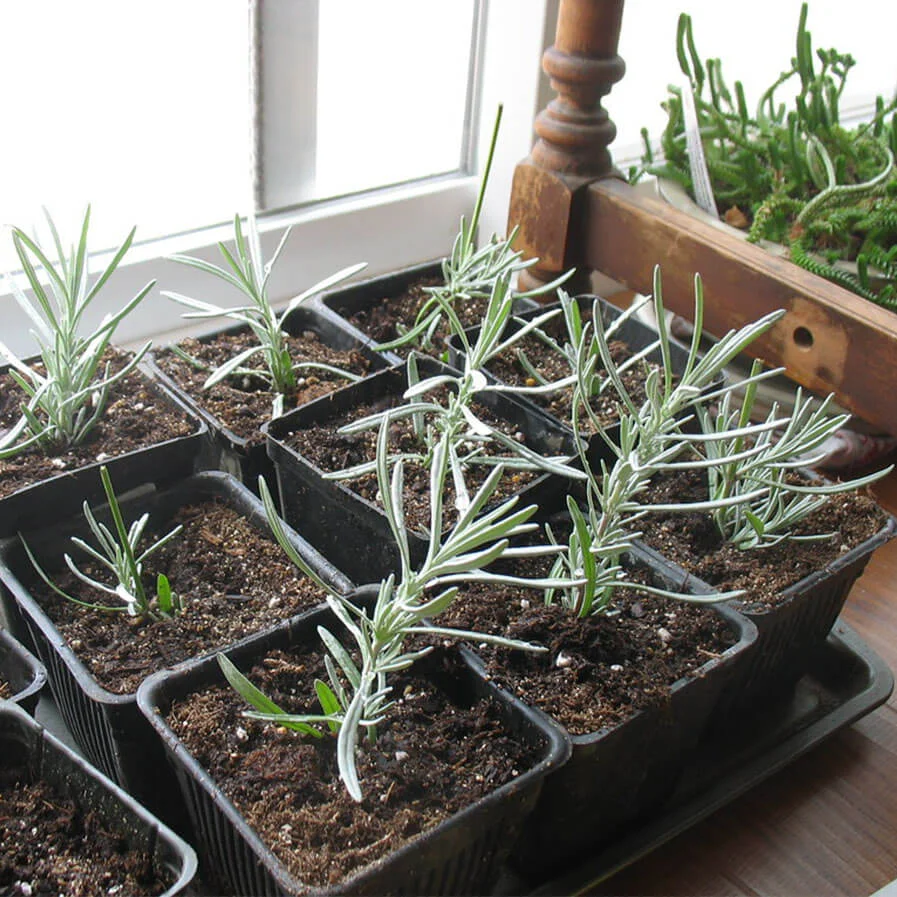
Lavender Cuttings
How to grow lavender from a cutting
To grow lavender from a cutting, follow these steps:
- Plan for humidity—If you propagate lavender inside the house, create a humid environment.
- Collect supplies – You’ll need propagation soil, a pot or propagation chamber, rooting hormone, and a plastic bag (optional).
- Take cuttings – Cut a 4-6 inch (6-15 cm) section of new growth from the parent plant.
- Remove leaves – Cut the leaves from the bottom 1/3 of the cutting.
- Dip in rooting hormone – Dip the bottom portion of the stem in rooting hormone.
- Plant in soil – Plant the cutting in propagation soil and water it.
- Cover with plastic – Cover the pot or propagation chamber with a plastic bag to create humidity.
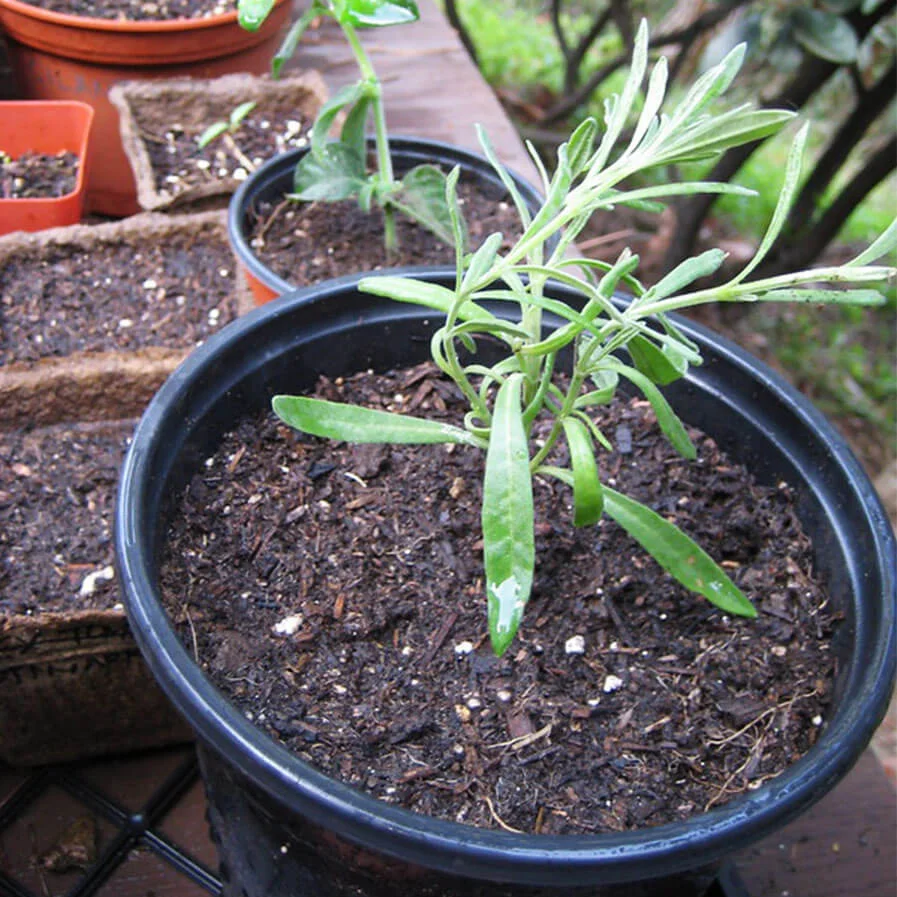
Transplanted Lavender Cuttings
A recap of 10 Tips to Grow the Best Lavender
- Choose a proper variety for your climate and requirements.
- Plant in well-drained, slightly alkaline soil.
- Provide full sun.
- Water appropriately.
- Prune regularly.
- Use the best soil mix for potted lavender.
- Monitor blooming times and adjust care accordingly.
- Encourage spreading through propagation or seed germination.
- Harvest at the right time and with the appropriate tools.
- Experiment with different Lavender varieties to find the best fit for your garden.
Troubleshooting Lavender: Growing Problems, Pests, and Diseases
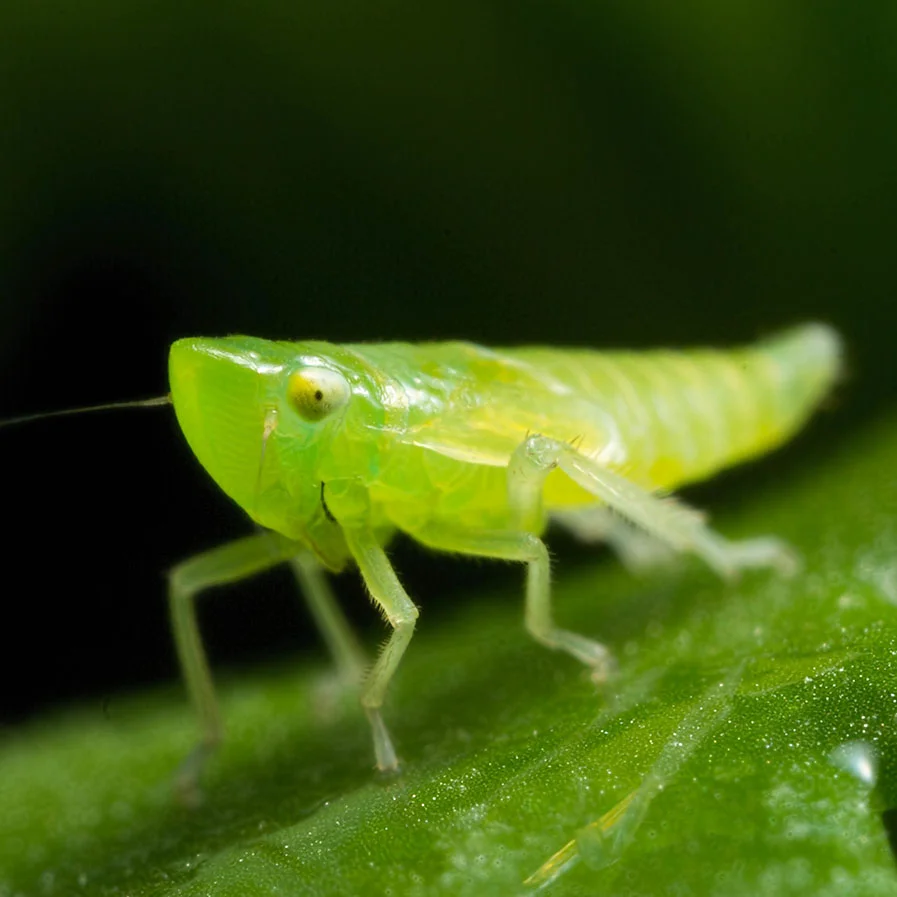
Leaf Hopper
Growing Problems
- Few or No Flowers: Lavender plants may have low flowering capacity in the first season due to transplanting at the wrong time of year or planting into poorly drained soils. To fix this, use a broad fork to loosen the soil around the plant and mix in well-draining materials like pea gravel, sand, or peat moss.
- Droopy Foliage: Droopy foliage can occur in lavender plants and is rendered by overwatering or insufficient drainage. To address this issue, ensure proper watering and improve soil drainage.
- Plant Becomes Woody: Overfertilizing Lavender can cause excessive leaf growth and fewer flowers. Avoid using Nitrogen-rich fertilizers and ensure the plant is grown in poor, dry soil.
Pests
- Leafhoppers: These insects can cause damage to Lavender plants by sucking sap from the leaves. To control leafhoppers, use insecticidal soap or neem oil.
- Spider mites: These tiny pests can damage plants by feeding on their leaves. To manage spider mites, apply insecticidal soap or neem oil.
- Spittlebugs: Spittlebugs produce foam on Lavender plants but do not feed on the plant. To remove the foam and bugs, hose them off with water.
- Whiteflies: Whiteflies can cause leaves to turn yellow and reduce growth. To combat them, employ insecticidal soap or neem oil.
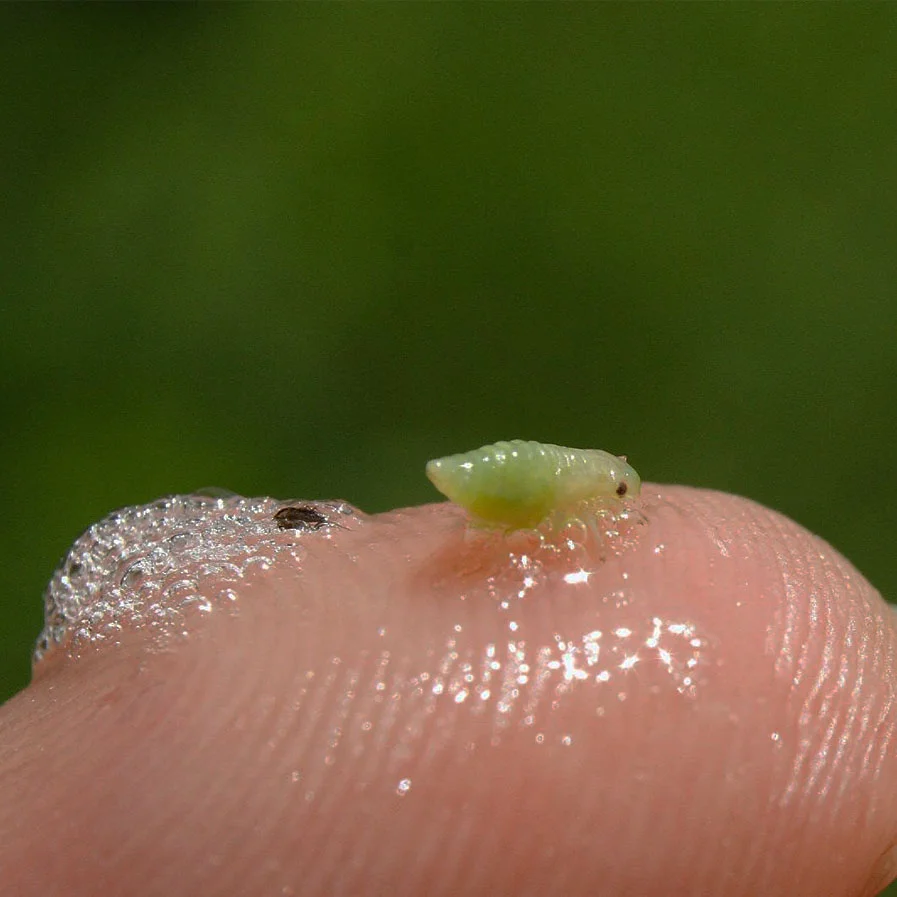
Spittlebug
Diseases
- Root Rot: Caused by soil-borne pathogens like Phytophthora, Fusarium, Pythium, and Rhizoctonia, root rot results in wilting and dying foliage and discolored roots. To prevent root rot, avoid overwatering and ensure proper soil drainage.
- Crown Rot: Similar to root rot, crown rot impacts the bottom of the plant and may induce wilting and dying foliage. To guard against crown rot, maintain adequate soil drainage, and avoid excessive watering.
- Alfalfa Mosaic Virus: This virus can cause yellowing and stunted growth in Lavender plants. To avert the spread of the virus, extract and destroy infected plants and control aphids, which may spread the virus.
- Xylella: Xylella is a bacterial disease that can cause leaf scorch, wilting, and dieback in Lavender plants. To prevent Xylella, maintain good plant health and remove any infected plants.
- Shab: Shab is a fungal disease that kills the stems of Lavender plants. To prevent Shab, ensure proper plant spacing and avoid overwatering.
- Botrytis: This fungal disease can cause gray mold on Lavender flowers and leaves. To control Botrytis, ensure good air circulation among the plants and clear any infected plant material.
- Septoria Leaf Spot: Septoria leaf spot is a fungal condition that causes little brown dots on Lavender leaves. To control it, clear infected leaves and avoid overhead watering.
Great Plants to Place next to Lavender
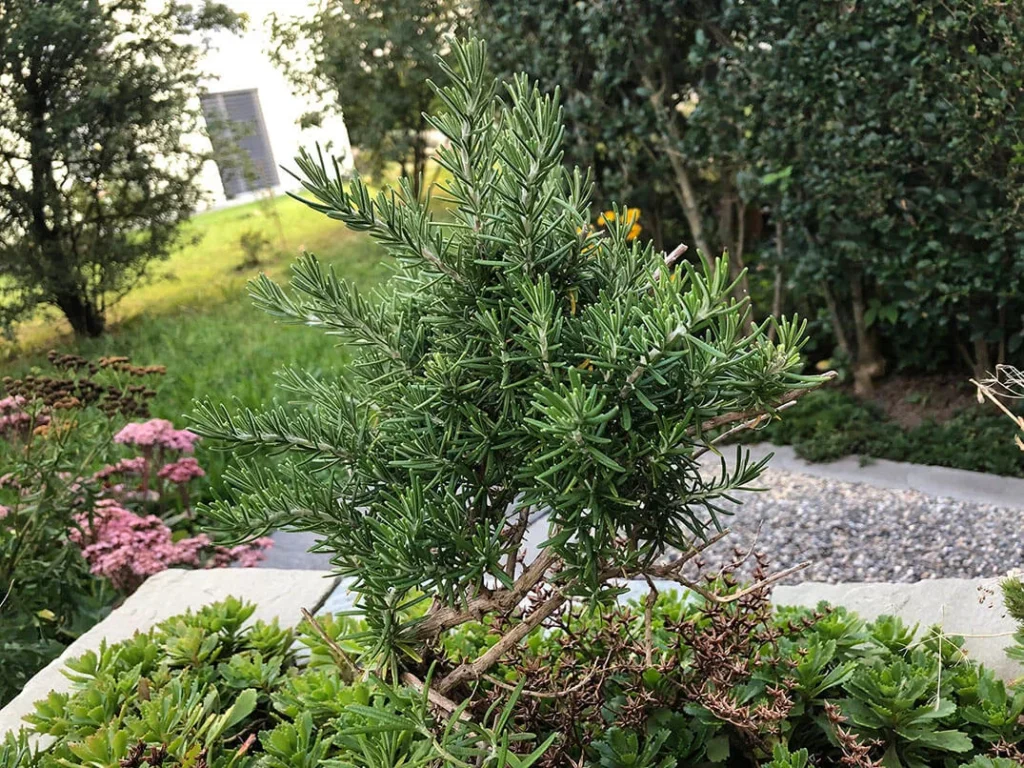
Rosemary in the Garden
Rosemary (Rosmarinus officinalis)
It complements lavender well and can help deter pests like mosquitoes and carrot flies.
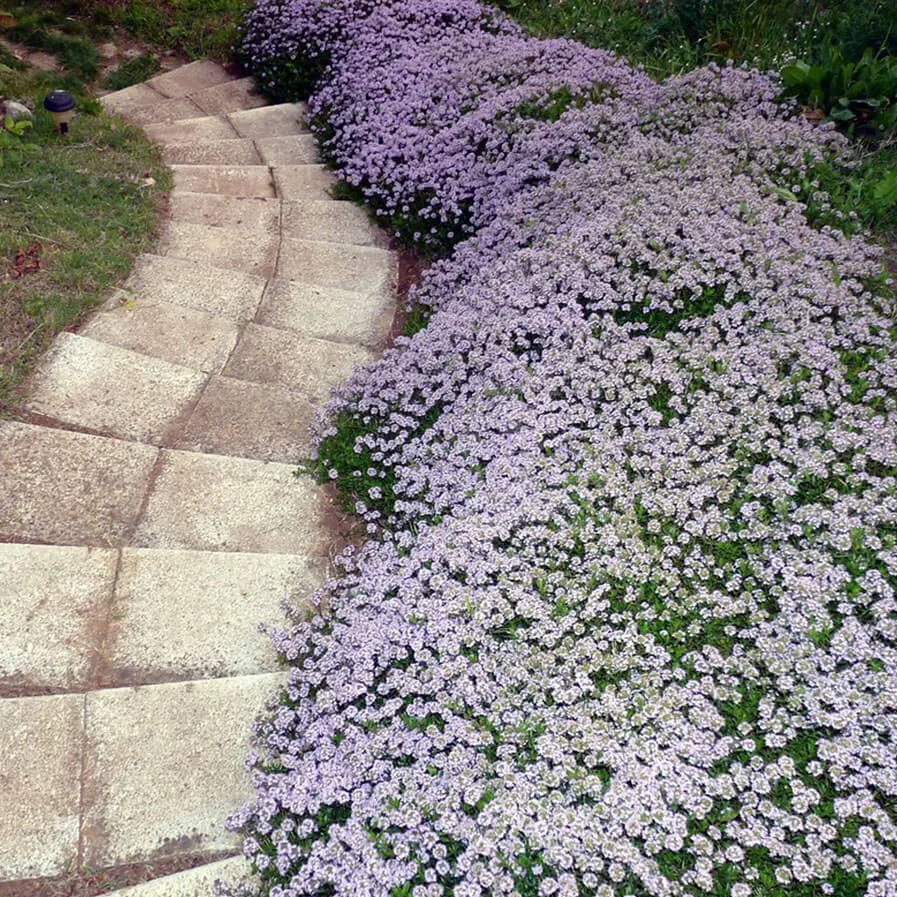
Thyme Hedge
Thyme (Thymus vulgaris)
With its low-growing rate, thyme is a good ground cover that provides a similar fragrance and attracts beneficial pollinators.
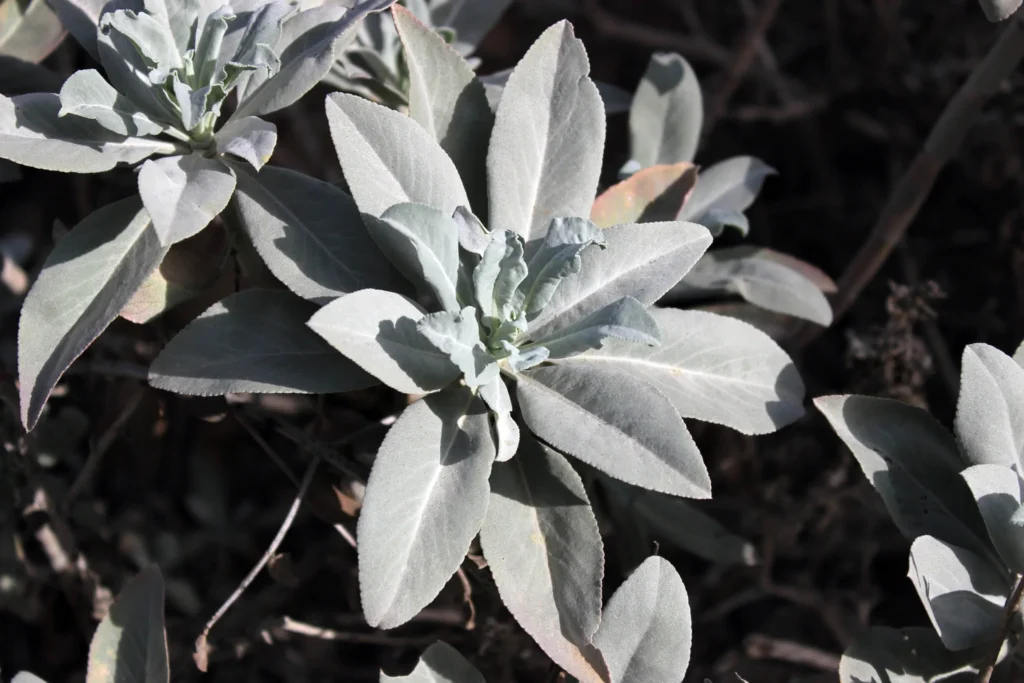
White Sage
Sage (Salvia officinalis)
Sage’s silver foliage contrasts very well with lavender, and it may repel some pests while attracting bees and butterflies.
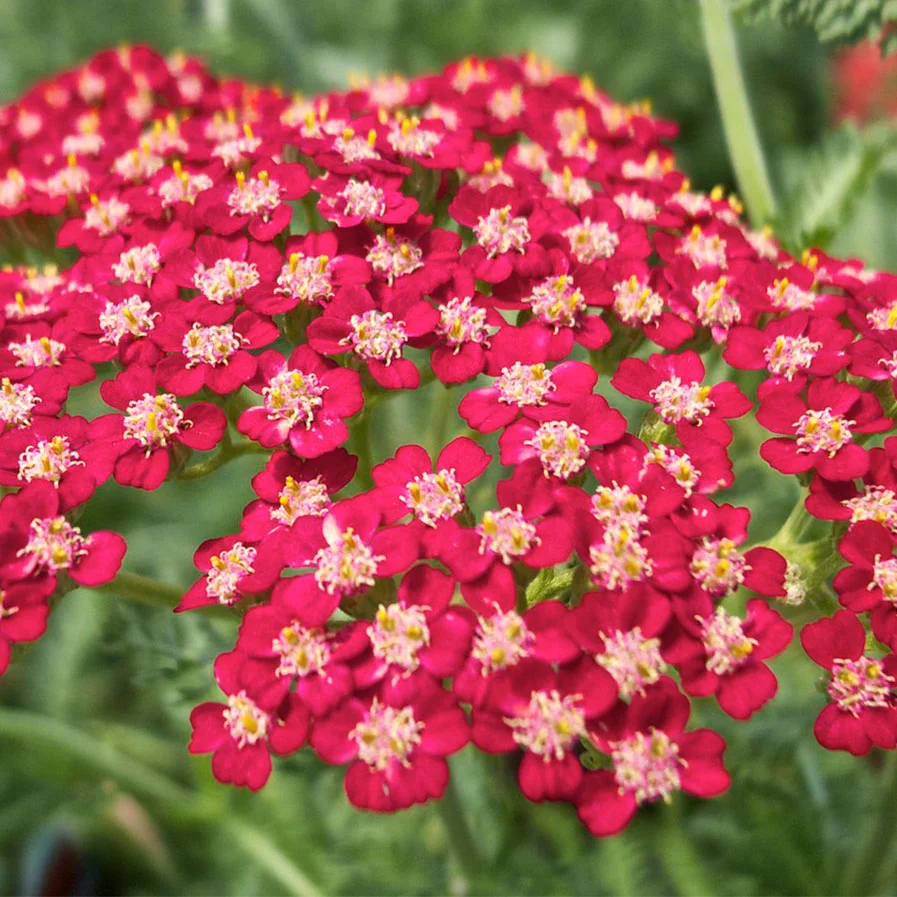
Yarrow
Yarrow (Achillea millefolium)
Yarrow’s delicate flowers attract beneficial insects like ladybugs and lacewings while also contrasting lavender’s spiky blooms.

Marigolds
Marigold (Tagetes spp.)
These beautiful flowers help deter pests like nematodes.
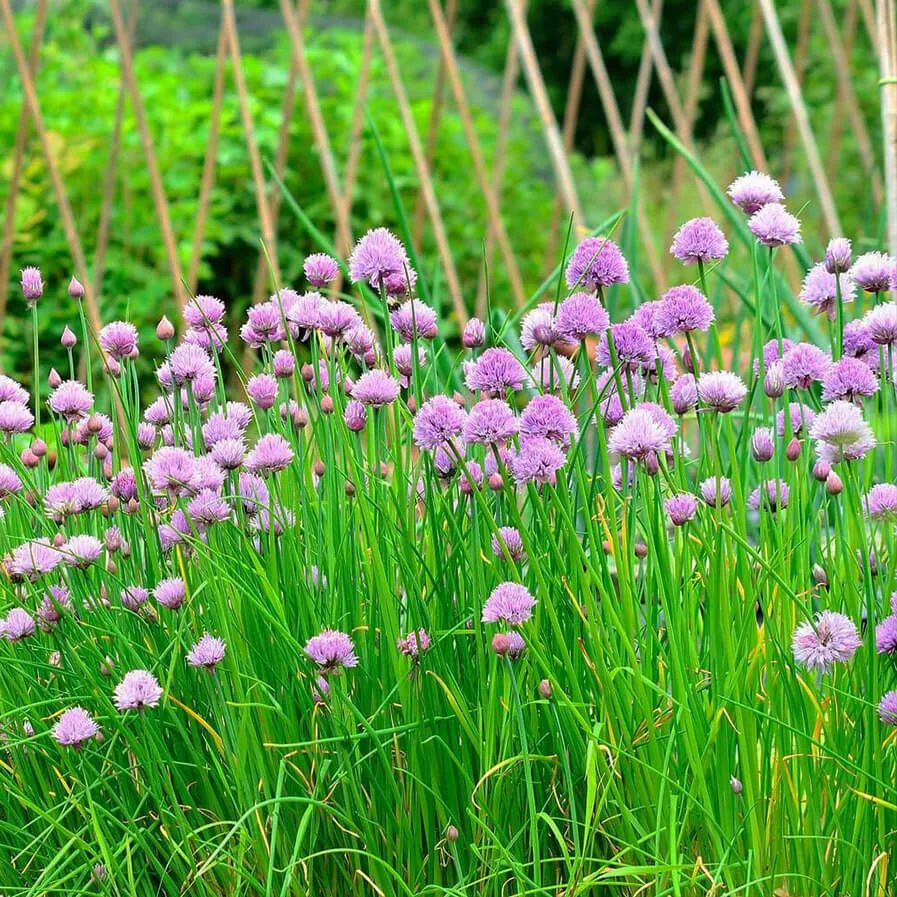
Chives
Alliums (Allium spp.)
Plants like chives, garlic, and onions can help repel aphids, slugs, and other pests that may bother lavender.
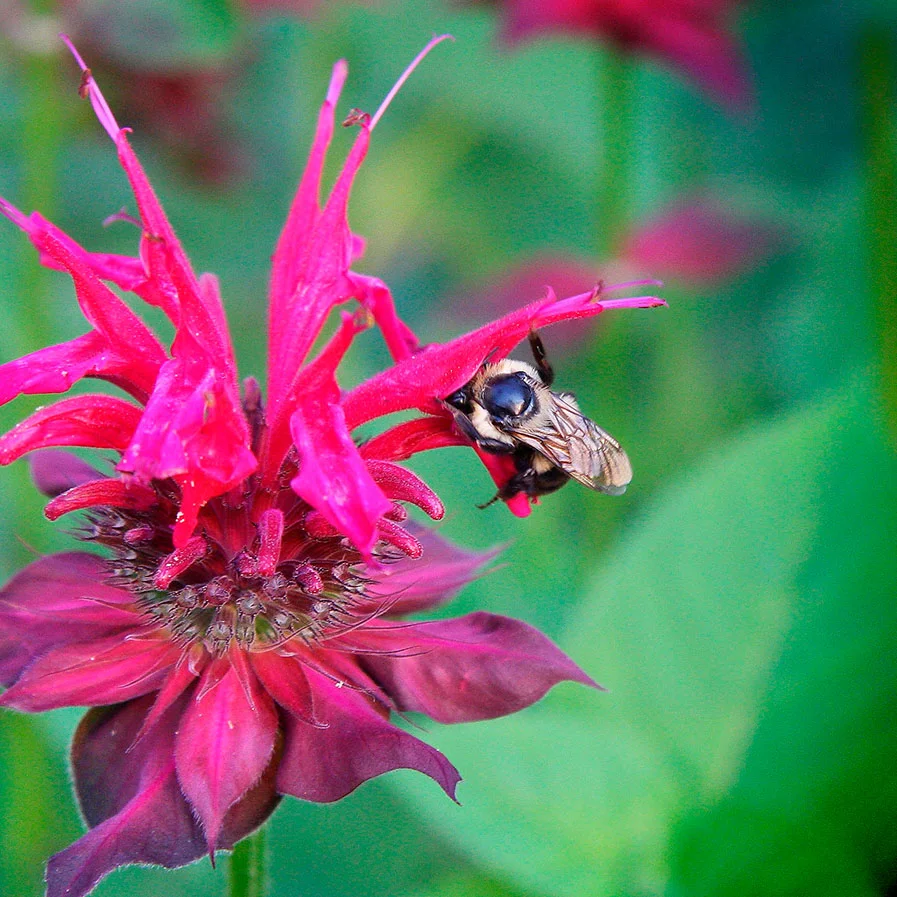
Bee Balm in Bloom
Bee Balm (Monarda spp.)
Bee balm’s vibrant flowers attract pollinators like bees and butterflies, benefiting nearby lavender plants by increasing pollination rates.
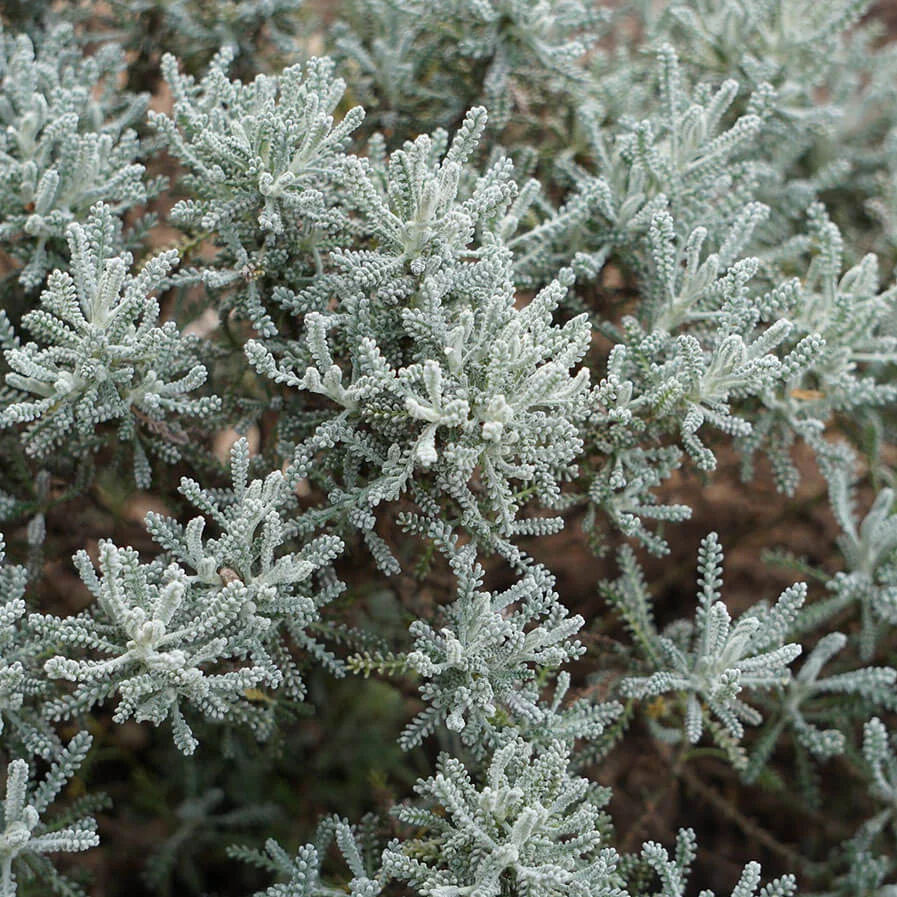
Lavender Cotton
Lavender Cotton (Santolina chamaecyparissus)
This low-growing, silvery-green plant complements lavender’s color and texture while repelling pests like moths and fleas.
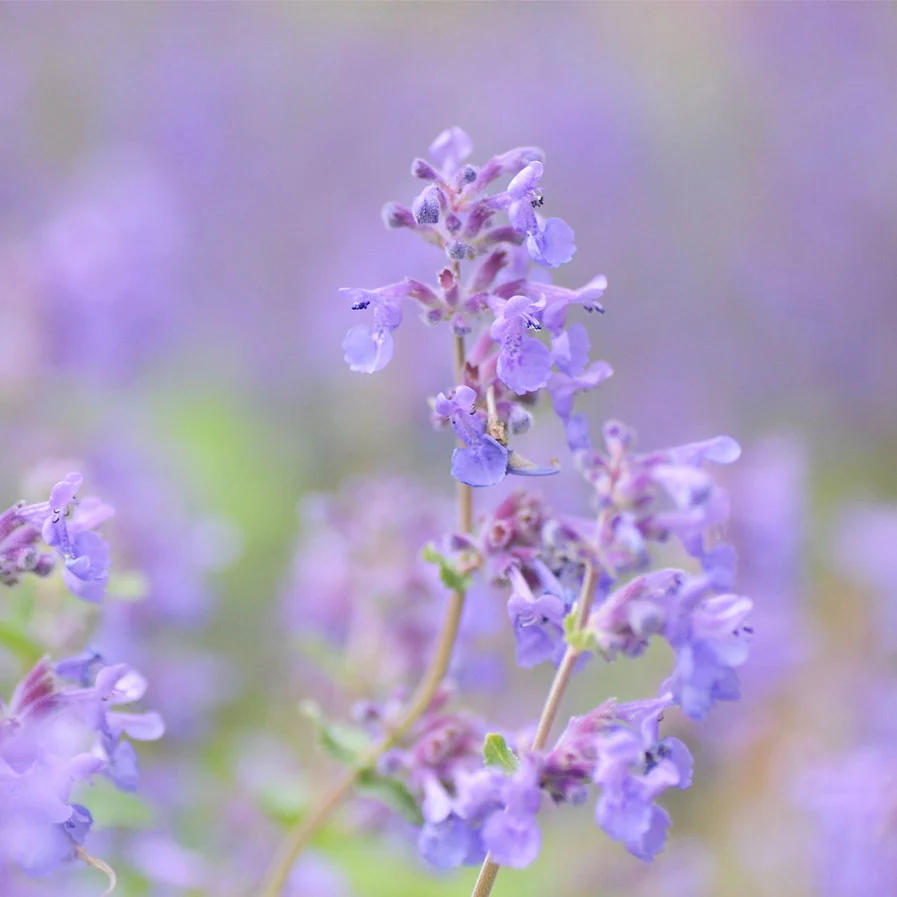
Catmint
Catmint (Nepeta spp.)
Catmint is a member of the mint family and shares lavender’s drought tolerance. It attracts pollinators and can help deter pests like aphids.
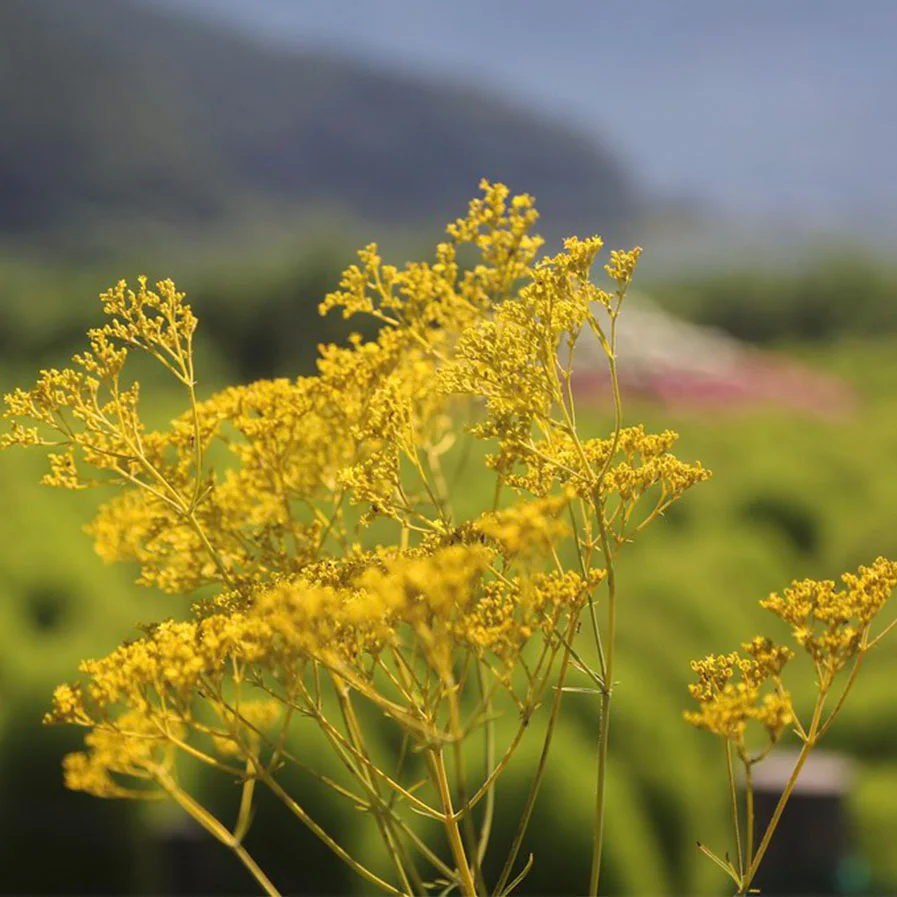
Fennel
Fennel (Foeniculum vulgare)
Fennel attracts beneficial insects like parasitic wasps, which prey on pests like aphids and caterpillars, making it a helpful companion for lavender.

Oregano in a container
Oregano (Origanum vulgare)
Like thyme and rosemary, oregano’s aromatic foliage complements lavender and can help deter pests while attracting pollinators.
Plants to avoid planting next to Lavender
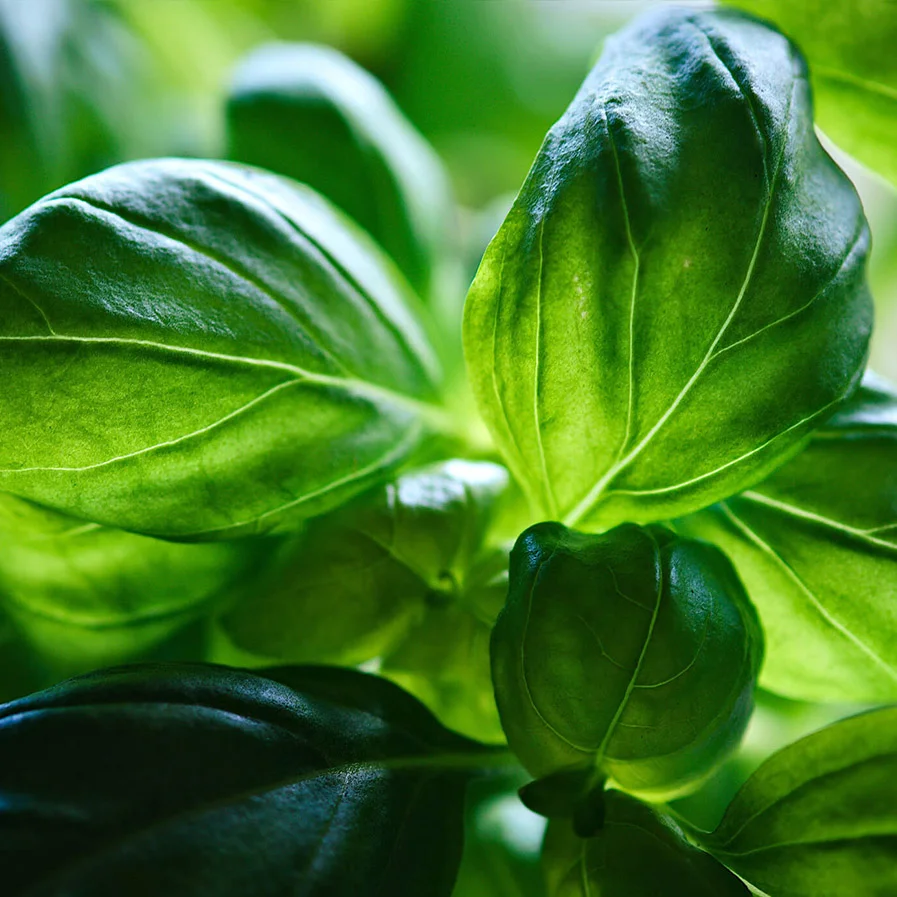
Basil
- Basil (Ocimum basilicum) – Basil requires more frequent watering and may compete with lavender for moisture in the soil.
- Mint (Mentha spp.) – Mint can be aggressive and invasive, potentially overcrowding lavender and other nearby plants.
- Parsley (Petroselinum crispum) – Like basil, parsley prefers consistently damp soil, which may be detrimental to lavender’s drought-tolerant nature.
- High-Nitrogen Plants – It’s worth noting that plants like tomatoes (Solanum lycopersicum) and cabbage (Brassica oleracea), which require high levels of nitrogen, may encourage excessive leaf growth in lavender, potentially reducing its flower production.
- Heavy Feeders – Plants such as roses (Rosa spp.) and hydrangeas (Hydrangea spp.) have high nutrient requirements and may deplete the soil of essential nutrients lavender needs.
Other plants similar to Lavender
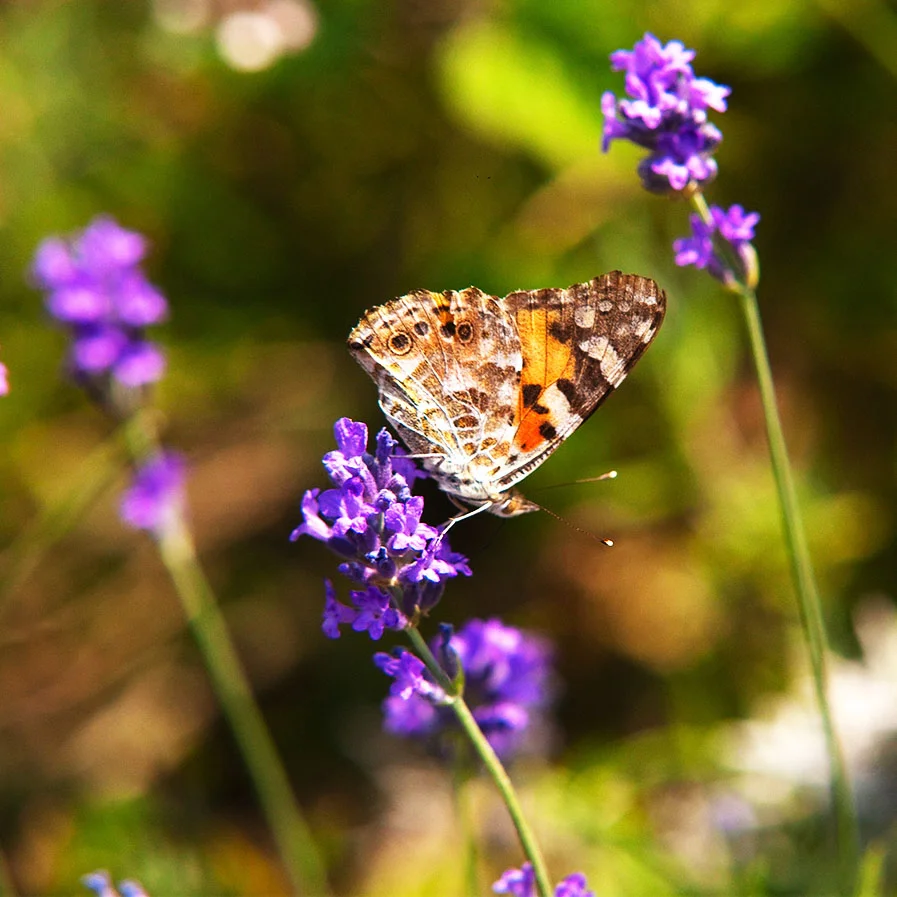
Butterfly on a Lavender Bloom
- Russian Sage (Perovskia atriplicifolia) – Russian sage shares lavender’s wispy, aromatic foliage and produces tall spikes of lavender-blue flowers. It’s also drought-tolerant and attracts pollinators like bees and butterflies.
- Catmint (Nepeta spp.)—Like lavender, catmint is a member of the mint family. It features aromatic foliage and spikes of small, lavender-colored flowers. It’s also drought-tolerant and attracts pollinators.
- Rosemary (Rosmarinus officinalis) – Rosemary has similar needle-like foliage and a fragrant aroma reminiscent of lavender. It’s drought-tolerant, easy to grow, and you can cook with it.
- Heliotrope (Heliotropium arborescens) – Heliotrope produces clusters of tiny, fragrant flowers in shades of purple, similar to lavender. It needs full sun and well-drained soil.
- Hyssop (Hyssopus officinalis) – Hyssop bears spikes of small, lavender-blue flowers and has a similar fragrance to lavender. It’s also attractive to pollinators; you can make tea or use it as an ingredient in some dishes.
Lavender, compared to other popular plants and condiments
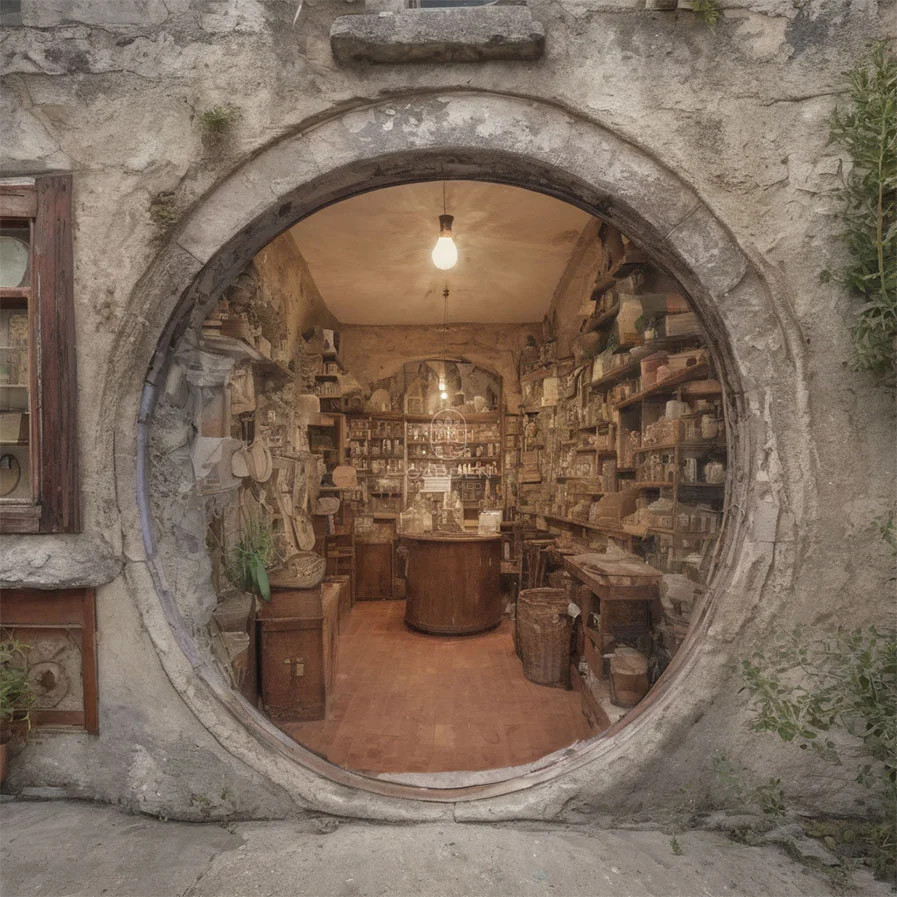
Herbal Shop Allegory
Credit Alberto Conde, Kitchen In The Med
Lavender
- Growing conditions: Lavender prefers full sun and well-draining soil, prospering in Mediterranean-like conditions.
- Characteristics: Lavender has a floral, slightly sweet taste with hints of citrus and pine. People use it to infuse syrups, baking, or garnish desserts for its fragrant aroma.
Basil
- Growing conditions: Basil favors warm, sunny locations with well-draining soil and prospers in Mediterranean climates.
- Characteristics: Basil has a sweet, peppery savor with large, tender leaves varying from green to purple. It’s very popular in Italian dishes, pesto, salads, and garnish.
Cardamom
- Growing conditions: Cardamom flourishes in warm, humid climates with spotted sunlight and well-draining soil.
- Characteristics: Cardamom has a warm, citrusy taste with floral undertones. The little green pods have a papery outer shell. People use it in curries, desserts, and beverages.
Thyme
- Growing conditions: Thyme thrives in sunny areas with well-draining soil and is drought-tolerant.
- Characteristics: Thyme has an earthy, slightly peppery, and lemony taste, with little gray-green leaves. People use it in soups, stews, roasts, and marinades.
Rosemary
- Growing conditions: Rosemary likes full sun and well-draining soil, and it’s drought tolerant.
- Characteristics: Rosemary has a piney, resinous flavor with needle-like dark green leaves. It is popular in roasts, grilled meats, marinades, and bread.
Oregano
- Growing conditions: Oregano prospers in full sun with well-draining soil and is drought-tolerant.
- Characteristics: Oregano has a bold, intense, and scarcely bitter flavor with little green leaves and groups of white flowers. It’s a staple herb in Mediterranean cuisine, used in pizzas, pasta, salads, and marinades.
Sage
- Growing conditions: Sage likes full sun and well-draining soil, and it’s drought tolerant.
- Characteristics: Sage has an earthy, peppery, and savory taste with fuzzy gray-green leaves. People use it in stuffing, poultry dishes, sauces, and roasted vegetables.
Black Pepper
- Growing conditions: Black pepper thrives in warm, humid climates with well-draining soil and requires support for its climbing vines.
- Characteristics: Black pepper has an intense, spicy, and slightly floral taste with little round berries that turn black when dried. It’s prevalent worldwide to add heat and depth to savory dishes.
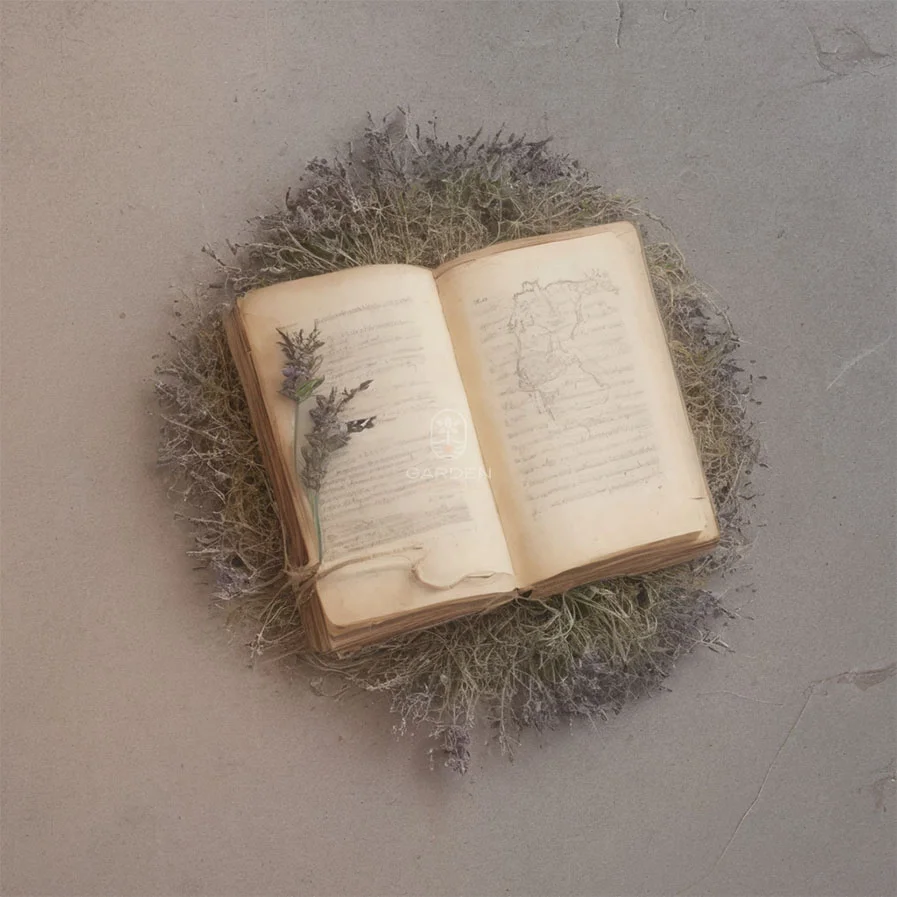
Lavender Allegory
Credit Alberto Conde, Kitchen In The Med
The most frequently asked questions about growing Lavender
Where and how to plant Lavender:
Lavender is best planted as a young plant starting in the spring after the ground has heated up to at least 60°F (15°C) and the threat of frost has passed. Lavender prefers well-drained soil with a sandy or gravelly texture and a pH of 6.0-8.0. Pick a sunny spot with adequate air circulation.
Can lavender grow in the shade?
No, lavender prefers a sunny spot with good air circulation.
When or what month is best for planting lavender?
The best time to plant lavender is in the spring after the ground has heated up to at least 60°F (15°C) and the threat of frost has passed.
What type of lavender is edible?
Culinary Lavender is the type of lavender that is safe to eat. For more about the Culinary uses of lavender, please check out my article here.
What lavender do people use for tea?
English Lavender (Lavandula angustifolia) is the most commonly used variety for tea because of its sweet and floral flavor. It is also known for its calming properties.
What lavender is the most fragrant?
Lavandula x intermedia, also known as lavandin, is the most fragrant variety of lavender. It is a hybrid of English Lavender and spike Lavender (Lavandula latifolia) commonly used for essential oil production.
What type of lavender is best for essential oil?
Lavandula x intermedia, or lavandin, is the best variety for essential oil production because of its high oil content and intense fragrance.
What lavender is best for a hedge?
English Lavender (Lavandula angustifolia) is the best variety for a hedge because of its compact growth habit and sweet fragrance. It is also hardy and easy to care for.
How do I store lavender?
Store it in a cool, dry place like a pantry or closet. You can also dry and store it in airtight containers for later use in cooking or crafting.
How do you keep potted lavender alive?
Place potted lavender in a spot with ample sunlight and give it minimal water. Once a year, nourish it with a slow-release fertilizer.
How to grow lavender indoors?
You can cultivate lavender indoors in a bright spot with soil that drains well. Provide it with minimal water and annually feed it with a slow-release fertilizer.
How to grow lavender from seed indoors?
Start Lavender seeds indoors using seed trays filled with soil that drains efficiently. Water them minimally and place them under grow lights until germination. After they emerge, ensure they receive ample light and nutrients.
Where does lavender grow best? And when should I grow it?
Lavender thrives in direct sunlight and soil that drains well. It can be grown in various climates outside the Mediterranean, including Florida, Texas, Australia, and the UK. Lavender should be grown in the fall and winter when temperatures are cooler in Florida and Texas. In Australia, Lavender can be grown year-round in cooler regions. In the UK, Lavender should be grown in the spring and summer.
Which are the best Lavender varieties for harsh winter conditions?
Lavender varieties that are hardy and can withstand harsh winter conditions include English Lavender (Lavandula angustifolia), French Lavender (Lavandula stoechas), and lavandin (Lavandula x intermedia).
Should lavender be grown on pots or on the ground?
Depending on your preference and space, lavender can be grown in pots or on the ground. Growing lavender in pots is an ideal option for small gardens or balconies while growing lavender in the ground allows it to spread and grow larger.
Lavender is best planted as a young plant starting in the spring after the ground has heated up to at least 60°F (15°C) and the threat of frost has passed. Lavender prefers well-drained soil with a sandy or gravelly texture and a pH of 6.0-8.0. Pick a sunny spot with adequate air circulation.
No, lavender prefers a sunny spot with good air circulation.
The best time to plant lavender is in the spring after the ground has heated up to at least 60°F (15°C) and the threat of frost has passed.
Culinary Lavender is the type of lavender that is safe to eat. For more about the Culinary uses of lavender, please check out my article here.
English Lavender (Lavandula angustifolia) is the most commonly used variety for tea because of its sweet and floral flavor. It is also known for its calming properties.
Lavandula x intermedia, also known as lavandin, is the most fragrant variety of lavender. It is a hybrid of English Lavender and spike Lavender (Lavandula latifolia) commonly used for essential oil production.
Lavandula x intermedia, or lavandin, is the best variety for essential oil production because of its high oil content and intense fragrance.
English Lavender (Lavandula angustifolia) is the best variety for a hedge because of its compact growth habit and sweet fragrance. It is also hardy and easy to care for.
Store it in a cool, dry place like a pantry or closet. You can also dry and store it in airtight containers for later use in cooking or crafting.
Place potted lavender in a spot with ample sunlight and give it minimal water. Once a year, nourish it with a slow-release fertilizer.
You can cultivate lavender indoors in a bright spot with soil that drains well. Provide it with minimal water and annually feed it with a slow-release fertilizer.
Start Lavender seeds indoors using seed trays filled with soil that drains efficiently. Water them minimally and place them under grow lights until germination. After they emerge, ensure they receive ample light and nutrients.
Lavender thrives in direct sunlight and soil that drains well. It can be grown in various climates outside the Mediterranean, including Florida, Texas, Australia, and the UK. Lavender should be grown in the fall and winter when temperatures are cooler in Florida and Texas. In Australia, Lavender can be grown year-round in cooler regions. In the UK, Lavender should be grown in the spring and summer.
Lavender varieties that are hardy and can withstand harsh winter conditions include English Lavender (Lavandula angustifolia), French Lavender (Lavandula stoechas), and lavandin (Lavandula x intermedia).
Depending on your preference and space, lavender can be grown in pots or on the ground. Growing lavender in pots is an ideal option for small gardens or balconies while growing lavender in the ground allows it to spread and grow larger.
Main Sources I used in This Article
National Library of Medicine
University of California Agriculture & Natural Resources
Taylor & Francis Group
Springer Link
University of Agronomic Sciences and Veterinary Medicine of Bucharest, Romania
Universidade de Coimbra, Portugal
Estudo Geral Repositório Científico da UC
Portuguese lavenders: evaluation of their potential use for health and agricultural purposes
DergiPark Akademik
International Journal of Agriculture Environment and Food Sciences
Research Journal of Agricultural Science
CAUTION!! Link downloads the document to your computer!
How to Grow Lavender Plants: The Complete Guide
History of usage of Lavandula species
Spikes of Azure Bloom: Lavender – History… and Stories
Lavender an Admired Shrub by Landscapers
Estudo Geral Repositório Científico da UC
Portuguese lavenders: evaluation of their potential use for health and agricultural purposes
International Journal of Agriculture Environment and Food Sciences
Insects on lavender in Isparta province, Turkey
CAUTION!! Link downloads the document to your computer!
1 Response